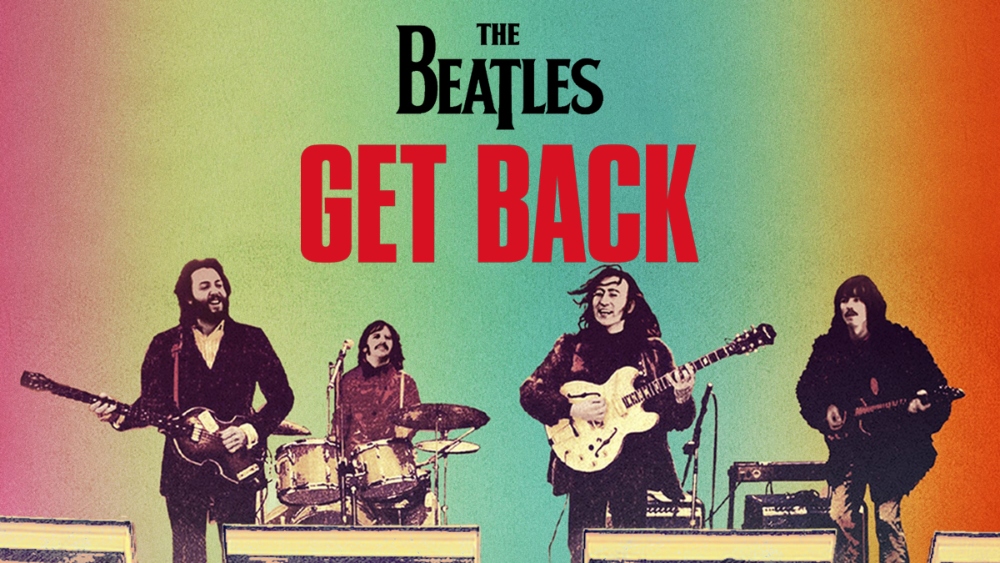
For The Beatles: Get Back, which is one of the most ambitious documentaries in recent years, Peter Jackson‘s longtime editor Jabez Olssen had to sift through nearly 200 hours of archival video footage and audio.
At one point, the documentary was planned for a theatrical release, but because of the pandemic, Jackson and his producing partners made the call to release it as a multi-part series on Disney+. At this point, the running time no longer posed a problem because viewers could watch Get Back at home at their own pace. It was quite the Thanksgiving treat for Beatles fans.
Olssen recently spoke to Below the Line and explained that the trickiest thing about putting the series together was sorting through the audio and footage from 1969. He explained that the original filmmakers didn’t want to disturb the Beatles while they were rehearsing new songs, so they didn’t use a clapboard signaling the start of a new take, which would’ve made his job much easier decades later. Olssen also discussed the sync process and even touched on the new technology that made it possible for Paul McCartney to duet on his current Got Back tour.
Read on for more behind-the-scenes tales from The Beatles: Get Back.
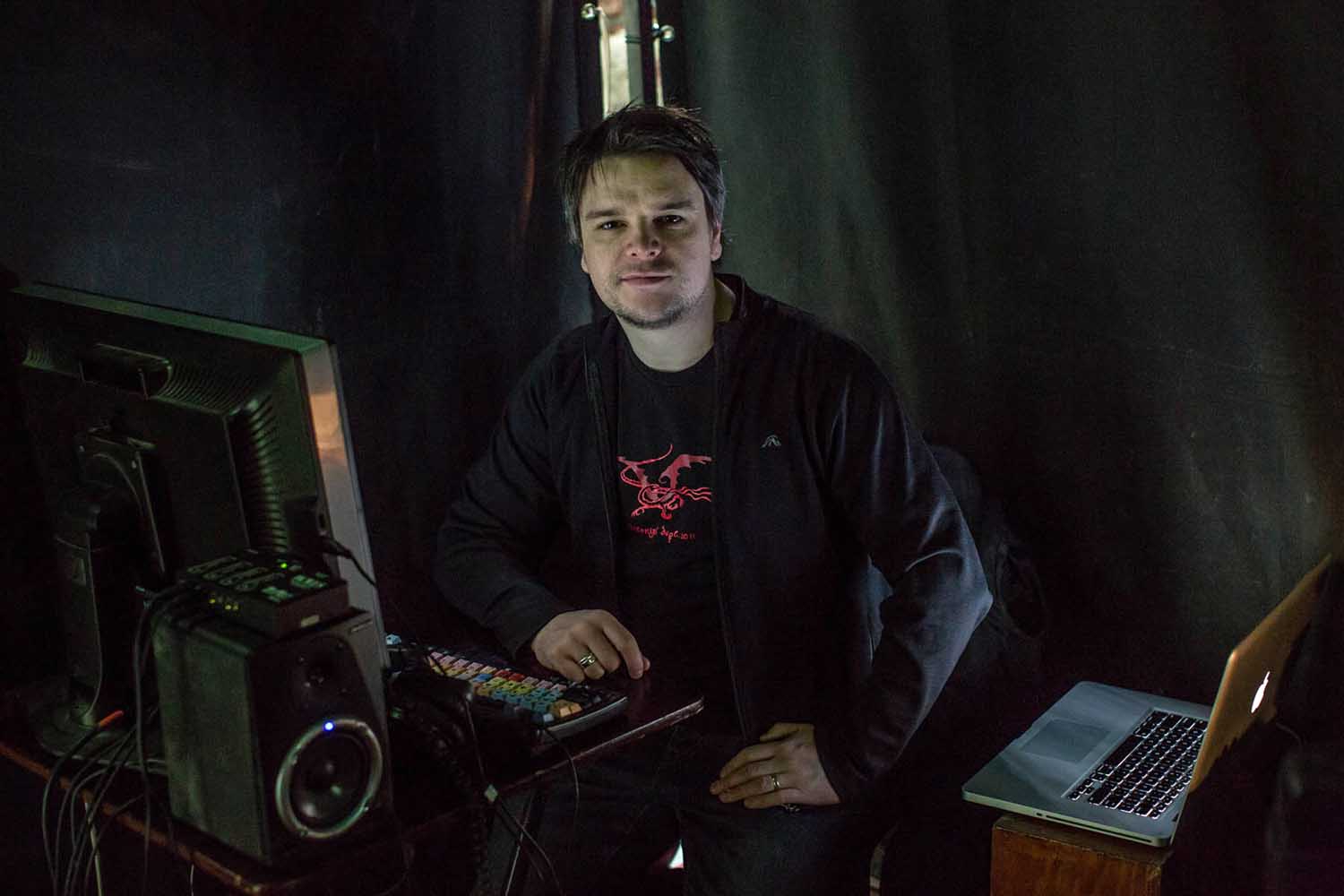
Below the Line: How quickly did you say “yes” to editing The Beatles: Get Back?
Jabez Olssen: I’m trying to remember if I was asked. I had been entertaining with Peter for a while. Being a Beatles fan, I think it was pretty quickly when he brought it up. I mean, the project evolved a lot, and what we were going to do with it evolved. We just sort of moved from our last project directly into this one, and it was a pretty smooth transition.
BTL: At what point did it become a documentary series rather than a feature film?
Olssen: Well, that was all because of the Covid situation. We were going to release one film in cinemas. I can’t even remember what year we were supposed to release it — I guess a year, probably about 18 months ago. But at the point we had to make a call, it looked as if cinema-going might be a bit dodgy and that might not be the way to have this seen. Talks started to evolve around releasing it on Disney+ instead, at which point, the actual running time became less of an issue because people at home have a remote control and they can pause it. If they want to watch it over several nights, they can. We had more time to work with, so things just naturally sort of expanded to fill the void.
BTL: Sometimes those remote controls go flying when you pull out the air guitar.
Olssen: Yes, yes, that’s right! But yeah, we thought people can watch it at their own speed when they’re getting to watch over a streaming service. There was so much more story to tell this way. We didn’t have to leave out a lot of the good stuff.
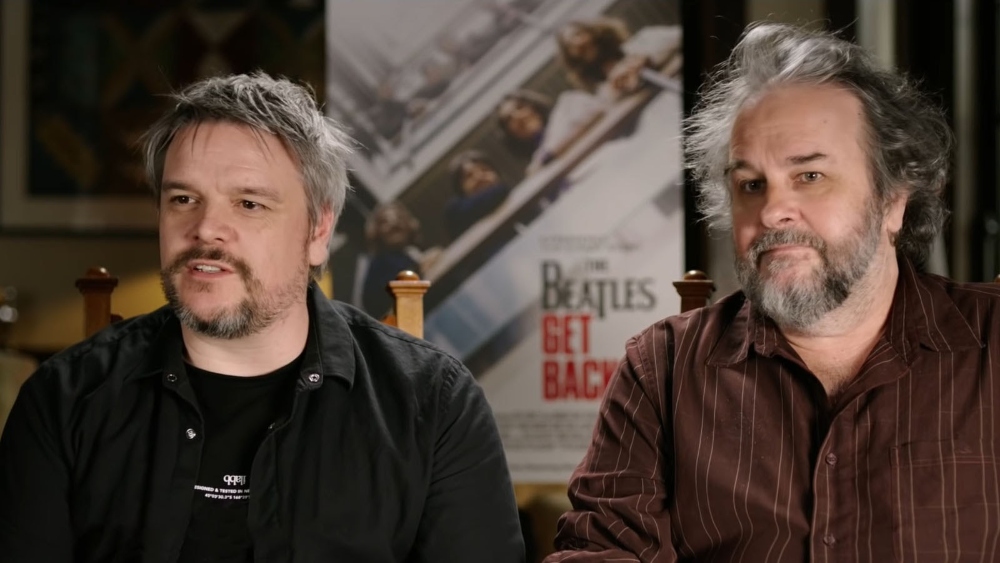
BTL: You’ve worked with Peter Jackson for a number of years now. What’s the shorthand like at this point in your relationship?
Olssen: It’s pretty good. He’s a focused director. He’s never lazy. He always wants to work as hard as he can and use up every moment he has to keep improving the story. He’s never one to rest on his laurels or just accept something as it is. He’s always trying to see if it can be improved. On this project, what that meant was, there was a lot of reviewing all the rushes that we had. We had 60 hours of footage and 130 hours of audio. He was forever going back into that just to make sure there was nothing great that had been missed, or nothing that now impacted the stories we were trying to tell that we had overlooked the first time. It was a constant process of iteration and layering the film up into what it eventually became.
BTL: You’re a Beatles fan yourself. Did you ever feel any pressure when it came to getting this one right?
Olssen: Well, yes, I think you do. There’s always pressure with films [but] you try to not think about that and just tell the best story you can. The pressure was often to actually get it done and get it finished by the deadline because we were never satisfied and we’re always wanting to make it better. That does mean that we tend to often work right up to a crunch point of delivery. Some things are always very busy in the last few months. We’re working a lot of hours and there are times when people wonder if we can get it all done, but we made it. Again, I’m sure if we had more time, we would have used that, too, and kept making changes, but we’re pretty pleased with what we ended up with.
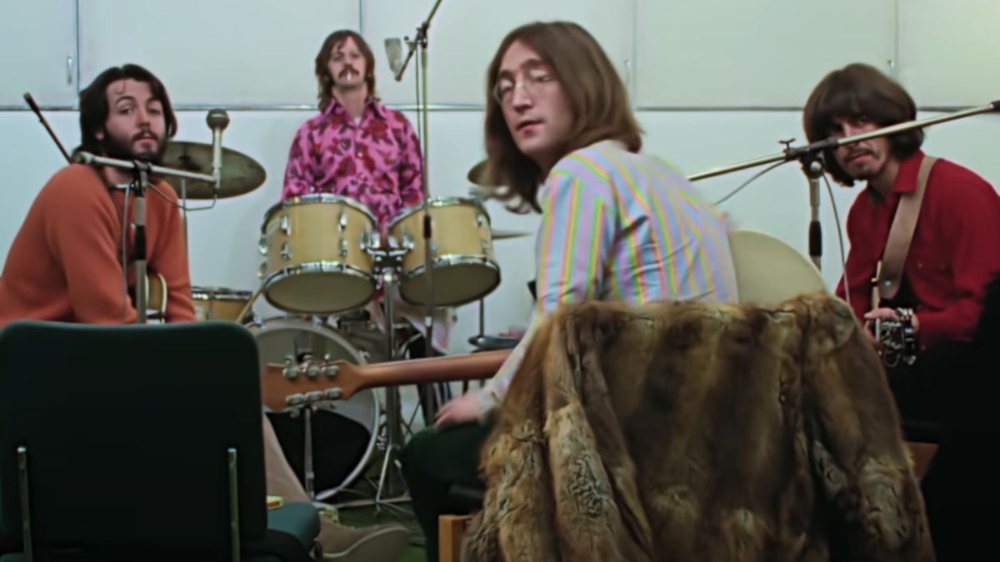
BTL: How long before Thanksgiving did you have the final cut set in stone?
Olssen: Not as long as you would think. I think it was a very late, last-minute delivery to Disney. Luckily, Peter owns a post-production facility here in New Zealand and so all the finishing, sound mixing, and color grading was being done in-house with his team. That allows for some efficiencies, and it was probably only days or maybe a couple of weeks, but maybe better measured in days before the final cut-off that we delivered.
BTL: What was the toughest part of cutting the documentary down from 17 hours to its final run time?
Olssen: That’s the toughest bit right there. It is the amount that you have to throw out. It’s the pain of giving up on some good moments, especially when we started to become fluid in terms of what the runtime was going to be. It really was just a matter of what is necessary to tell the story, but what won’t be missed. It is that pain of having to give up scenes and moments that are really good on their own and as a standalone piece, they work well. You have to make some sacrifices for the overall flow of the entire film. It’s the wondering if we’ve got that balance right and whether we should have dropped something else. And if something else, it constantly digs at you. That’s where the skill is, to try and actually see it with fresh eyes and understand that you’re telling the story in its best form.
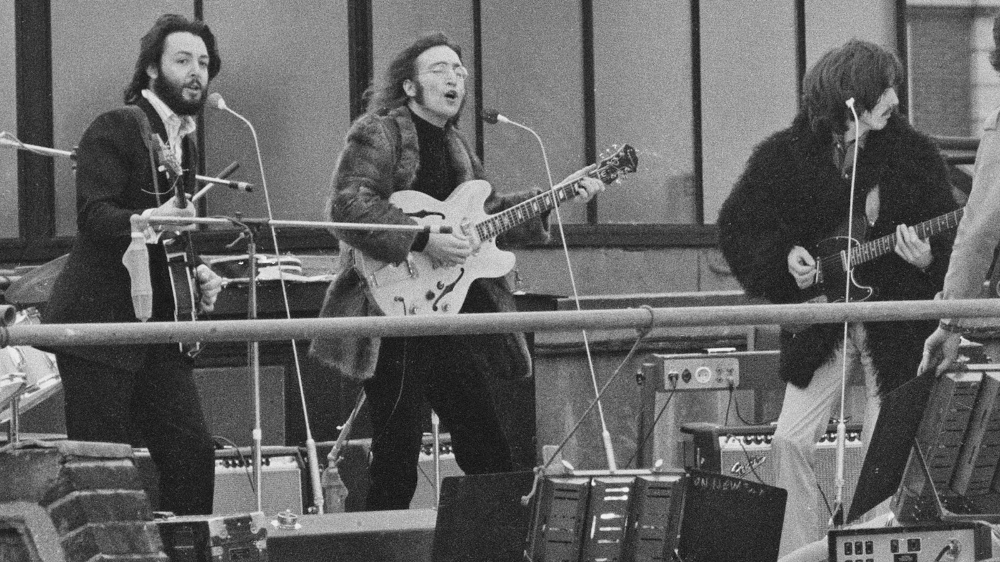
BTL: Are there any particular sequences you wish you could have kept in the film?
Olssen: Well, there are other things that may, I’m sure — The Beatles or Apple Corps, which is their company — may release someday. There are other songs that they worked on. There’s a visit by one of their early managers, Allan Williams. There are a couple of other songs. There’s a version of Paul’s song, “There You Are, Eddie,” about his dog, where they improvise the names of all the different pets the Beatles have ever owned. They list them all as they improvise the song and that was pretty fun. There are other songs — a lot of improvised songs that were fun but didn’t make it in — ones where they list all their old friends from Liverpool. There are all sorts of things that were fun in their own right but just didn’t make the final cut.
BTL: What was the thought process surrounding the decision to not include any footage previously seen in Let It Be?
Olssen: That was a thought we started out with. I mean, honestly, by the end, that wasn’t achieved. We did have to reuse a few shots and moments just because there were great storytelling points that couldn’t be covered any other way. The original idea was to try and make this as a different documentary that wasn’t just an expanded or rehashed version of the original film, so that the two films could both coexist beside each other. You could still watch our film and also watch Let It Be and not feel that you were wasting your time because you’re seeing repeated material. That was really what it was about. It was about respecting the original film and looking for what people hadn’t seen and what else there was.
I hope people do get to see the original Let It Be as well, one day. It’s a bit hard to find at the moment and they hopefully will work well together. I mean, in a way, our film really is the making of their film. The filmmaker, Michael Lindsay-Hogg, and them are characters within our film. One of the major storylines we have is, ‘what is the film going to be? Is he going to get it made?’ That whole drama is part of the story. So to see the end result of our film is their film. You watch our film and you wonder, ‘well, what did they actually end up achieving’ and then you can go and watch Let It Be and see the end result.
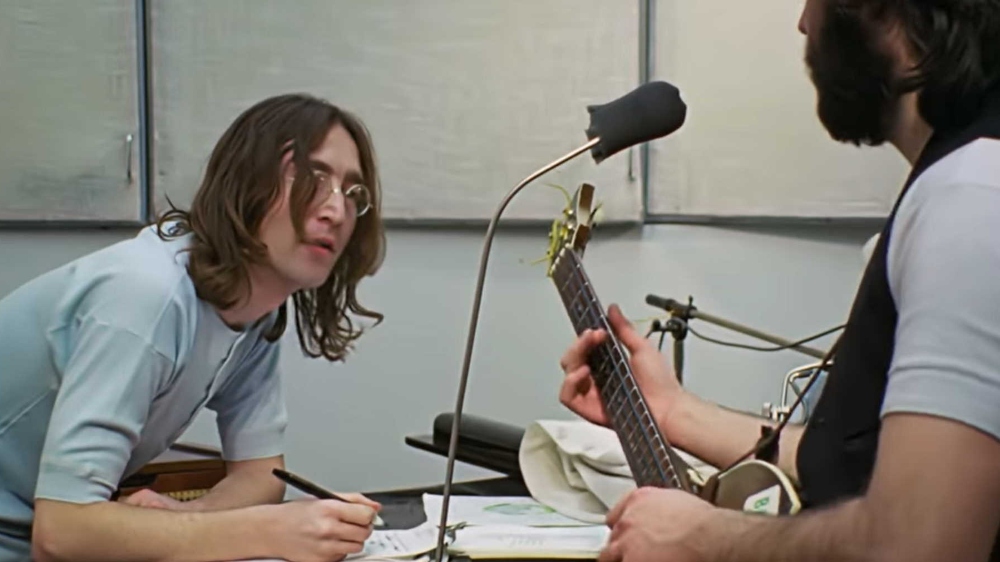
BTL: What was the most challenging part of having to edit this during a pandemic?
Olssen: We had a couple of lockdowns. We all had to stay home and so technically, that was quite challenging. I quickly set myself up with an Avid editing machine at my house. I would do some assembles of some scenes from some days. We had a means where I could transfer those to Peter at his house and he could watch them and that allowed us to continue forward and make some progress. It was a lot harder with Peter and I not being able to be in the [same] room for a couple of months. Luckily for us, down in New Zealand, after our first lockdown, we did eliminate Covid for 18 months, so we were able to get back to normal for a while. Just as we were finishing the film, we had another lockdown, as I think there was an outbreak of the Delta variant. That messed us up right when we were trying to deliver. That was quite a tricky one, too, but luckily, we got there. But it was mainly these sort of short shop lockdowns that we experienced and apart from that, we were able to still go to work. Peter and I are the only ones in the room anyway, so it’s a small bubble, as they say. We’re fairly socially distanced in there. We sort of locked ourselves away from the world and just kept on working.
BTL: How much work went into synchronizing both sound and film?
Olssen: There was a lot. There was a lot of work that started a long time ago, early. It actually started in England — The Beatles’ company, Apple Corps, had hired people to start on that. Where it gets technically challenging is that the two cameras that most of this film was shot with didn’t run in perfect sync [with] each other. They would drift — the longer they were turned on and running, the more they would sort of drift and get out of sync, both with each other and with the audiotapes that were running. They had two audiotapes running most of the time and two cameras that didn’t run all that often because film stock was expensive. Occasionally, they were running at the same time, and occasionally, they weren’t.
What the assistant editors had to do — first in England and then later [those] in New Zealand who continued on with the project — was take the audio and adjust its speed to match the picture. Now, of course, because we had two cameras, which were not running at the same speed, they had to take the first Nagra audiotape, adjust it to the speed of the first camera, then adjust it to the speed of the second camera, then take the second Nagra audiotape, adjust it to the speed of the first camera and then adjust it to the speed of the second camera. We’ve got four different versions of the audio that we’re having to juggle between and work out, which is the best. If we suddenly swapped cameras and went to the other camera, then we had to change all the audio files we were using — so [it was] a big technical challenge.
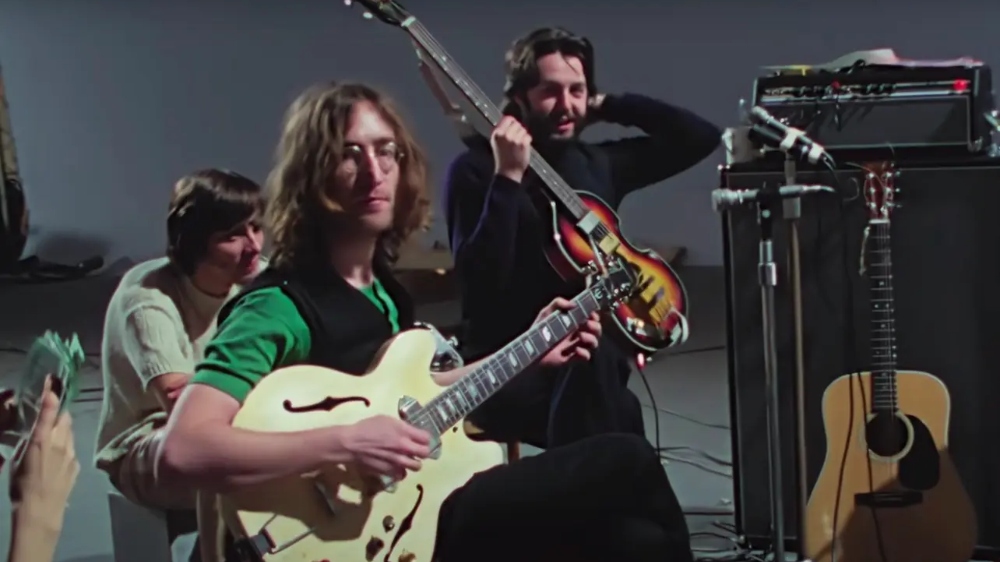
The other challenge was that normally when you’re recording audio separate from the film, you use a clapper board that makes a clap at the start of each take. The assistant editors are able to use those claps to sync the audio to the picture. Well, the film crew didn’t want to bother The Beatles while they were making songs, so they decided not to do any of the claps, which meant that a lot of audio we had to just sort of eye match. Even Peter and I got involved in it because we would be suddenly listening to some audio that we thought had no picture. We would recognize the pattern of it, ‘oh, there’s George talking, then Ringo says a quick response, and then John cuts in.’ We’re like, ‘oh, we saw a silent film that looked like that.’ We would take some audio and try it on the picture. We got lucky quite a few times and were able to discover some new sync that nobody knew existed. It was a massive challenge and I don’t know how, in 1969, the post-production crew even attempted it without computers and things. It must have been a huge challenge for them to sync the audio on film all those years ago.
BTL: How does it feel to know that as recently as a few days ago, Paul McCartney was using footage from the documentary on his Got Back tour?
Olssen: We helped them with that and we put that together for him. That’s fantastic. We’ve been watching some clips on YouTube and it’s just amazing to see Paul being able to sing “I’ve Got A Feeling” with John Lennon. That was possible because of the machine learning and artificial intelligence software that had been developed down here by the team to clean up the audio. We had a lot of audio that was otherwise going to be unusable because there was no clarity to the dialogue. You couldn’t hear what was being said because of all the guitars playing over the top of it or tuning or background noise. This new software has been developed — this artificial intelligence software — that’s able to recognize the different Beatles voices and instruments and separate them out into their own standalone tracks, and thus we could get a lot more usable audio for the documentary. The same software is now being used for Paul’s concert to remove all the other Beatles off the audio so it’s only John Lennon live singing, and then that can be played on the screen behind Paul as he sings his part live. That’s just a thrill to see that it’s all come together and it’s working.
BTL: I watched it on YouTube the other day and my jaw dropped.
Olssen: Yes, it’s great. He’s never been able to do that before and now he can.
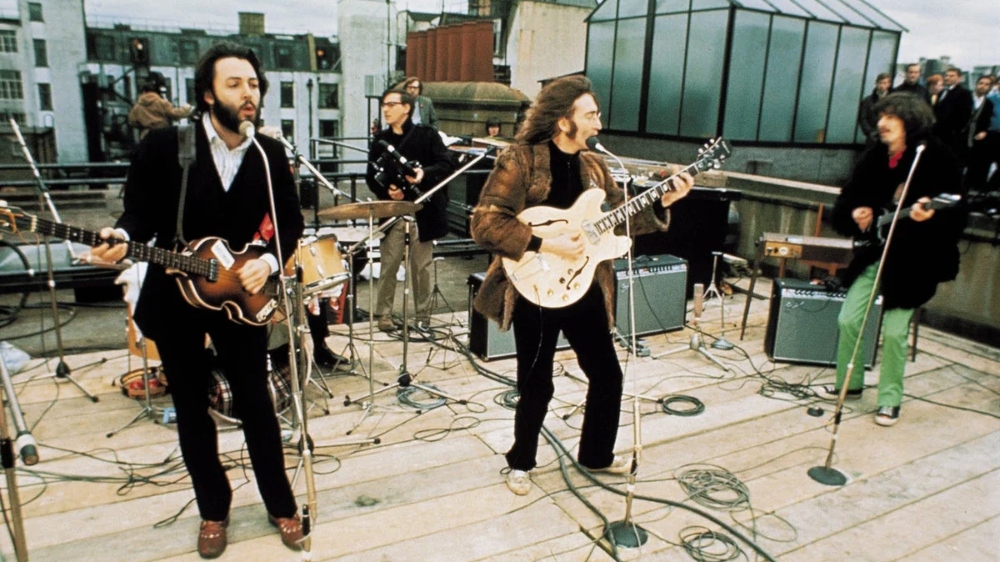
BTL: What was it like to be able to watch the rooftop concert come together through the editing process?
Olssen: That was very special. Finally, after shooting for a month just with two cameras, they brought in a whole lot of extra cameras for that concert. We had something like 10 cameras running and they were good cameras. They stayed in sync, which made my job a lot easier. I was able to switch between them pretty painlessly. That was amazing because there was so much coverage. That’s why we ended up using a lot of split screens because we’d see all these great angles and we didn’t want to limit it to just one. It’s like, ‘well if we just have that one, we will miss these moments.’ Suddenly, we’re split-screening, which allows people to watch it multiple times and see different things.
The rooftop concert was one of the highlights, and one of the most fun parts to cut. We did our initial cut quite quickly. It was in two or three days we assembled that because we had a trip to England planned. Suddenly, Peter thought it would be fun to cut the rooftop and take it over and show everybody over there. Suddenly, we were working hard and slamming that together. That was back in 2019, one of the last trips we could make before the pandemic. It’s just great. We’ve had the rooftop for a couple of years and it’s great that the whole world gets to see it now.
BTL: That was pure joy watching it just before Thanksgiving.
Olssen: That’s right, yeah. I mean, I think it’s the closest any of us can come now to actually being at a Beatles concert. Some of the other concerts that have been filmed, like Shea Stadium, they’re very distanced and the crowds are so large, you can’t hear very well. But with the rooftop, you feel like you’re sort of sitting in the front row, they’re sounding great, and you get to see them all. It’s just like being at a Beatles concert, or at least, it’s as close as we can come now.
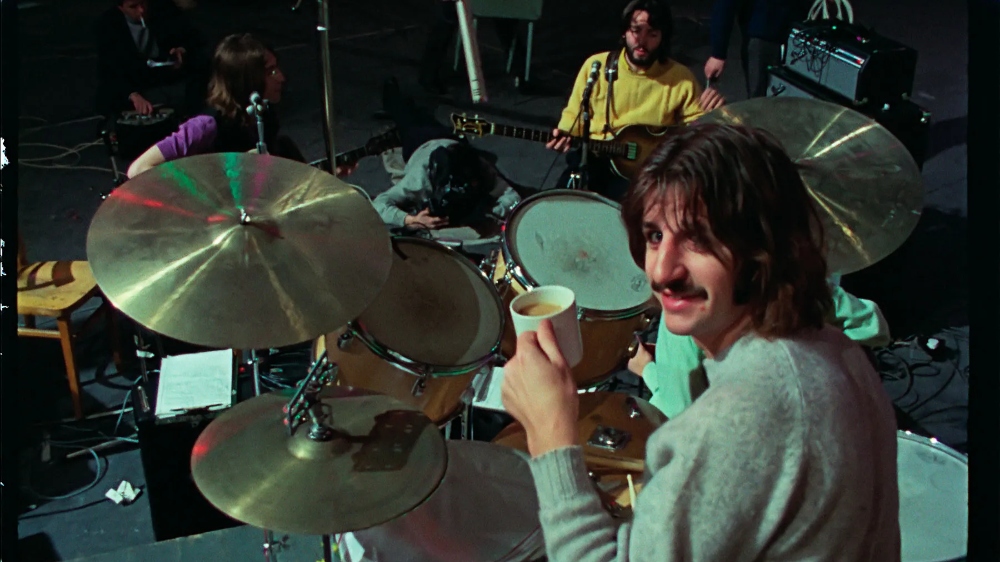
BTL: I would be remiss if I did not mention that I have watched Rogue One several times during the pandemic.
Olssen: Oh, great. Fantastic. That was another big challenge for lots of reasons, but yeah, it was a fun one to work on.
BTL: It’s still a fun one to watch.
Olssen: My little claim to fame with that was pitching the idea for Darth Vader at the end, coming in with the lightsaber and killing all the rebels.
BTL: That was pure genius.
Olssen: That was my pitch and luckily, Kathy Kennedy liked it and ran with it, so that was good.
All episodes of The Beatles: Get Back are now streaming on Disney+.





